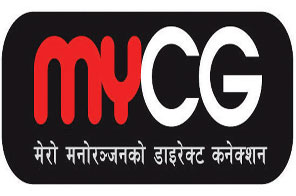My CGs DTH likely first in Nepali sky
KATHMANDU: My CG -- mero manoranjanko direct connection -- is planning to start Direct to Home (DTH) satellite television service by the end of June.
"In the first phase, we'll be offering 60 channels," said Nir Shah, chairman of CG Techno Dreams -- a new venture of Chaudhary Group (CG) that has already invested Rs 1,000 million in the much-vaunted project. it is the biggest project of the private sector in the television field yet.
"In the second phase, we'll offer 30 more channels," he said adding that it will make a total of 90 channels but 25 per cent of the channels will be in Nepali language.
Though the government has licenced five companies to operate DTH satellite television service in Nepal by setting up their own hub stations, CG Techno Dreams is upbeat due to its chairman.
The veteran actor and the man who master-minded Nepal Television (NT) thinks that at one point of time, the television world will be completely digital and satellite-based.
"DTH offers better quality picture than cable TV," said Shah adding, "because it offers stereophonic sound effects and can also reach remote areas."
The way DTH reaches a consumer's home is also different from the way cable TV does. "In DTH, TV channels would be transmitted by the satellite to a small dish antenna mounted on the window or rooftop of the subscriber's home. So the broadcaster directly connects to the user," he added.
Middlemen like local cable operators are not there in the picture. "Consumer will have multiple choices," he said adding that they can choose the channels they want to watch and pay accordingly.
"CG Techno Dreams -- apart from TV network -- also offers multi-facility for its consumers that is a complete package of information, recreation and communication," said Shah, who is starting a new innings in the TV world with CG Techno Dreams.
How it works
KATHMANDU: DTH stands for Direct-To Home Television. DTH is defined as the reception of satellite programmes with a personal dish In an individual home. DTH doses away with the need for the local cable operator and puts the broadcaster directly In touch with the consumer. Only cable operators can receive satellite programmes and they then distribute them to individual homes. A DTH network consists of broadcasting centre, satellite, encoders, multiplexers, modulators and DTH receivers. the service provider has to lease Ku-band transponders from the satellite. The encoder converts the audio, video and data signals into the digital format and the multiplexer mixes these signals. At the user end, there will be a small dish antenna and Set-Top Boxes to decode and view numerous channels. On the user's end, receiving dishes can be as small as 45 cm in diameter. DTH is an encrypted transmission that travels to the consumer directly through a satellite. DTH transmission is received directly by the consumer at his end through the small dish antenna. A Set-Top Box, unlike the regular cable connection, decodes the encrypted transmission.






